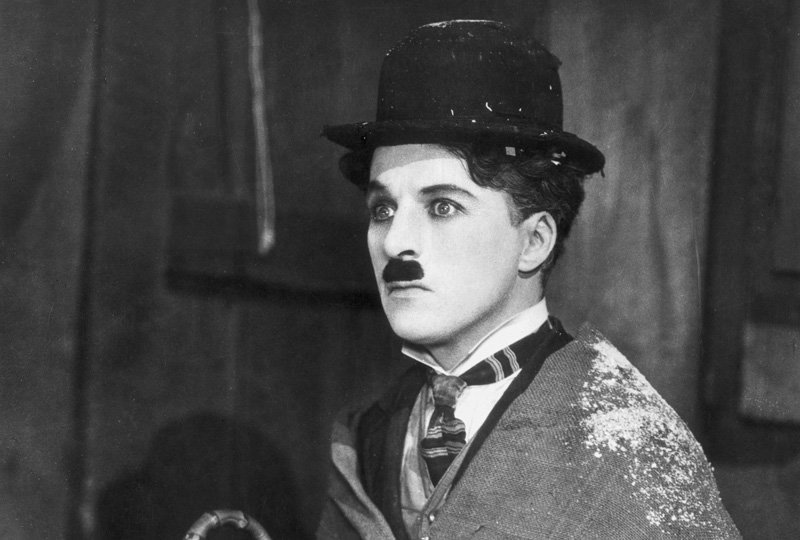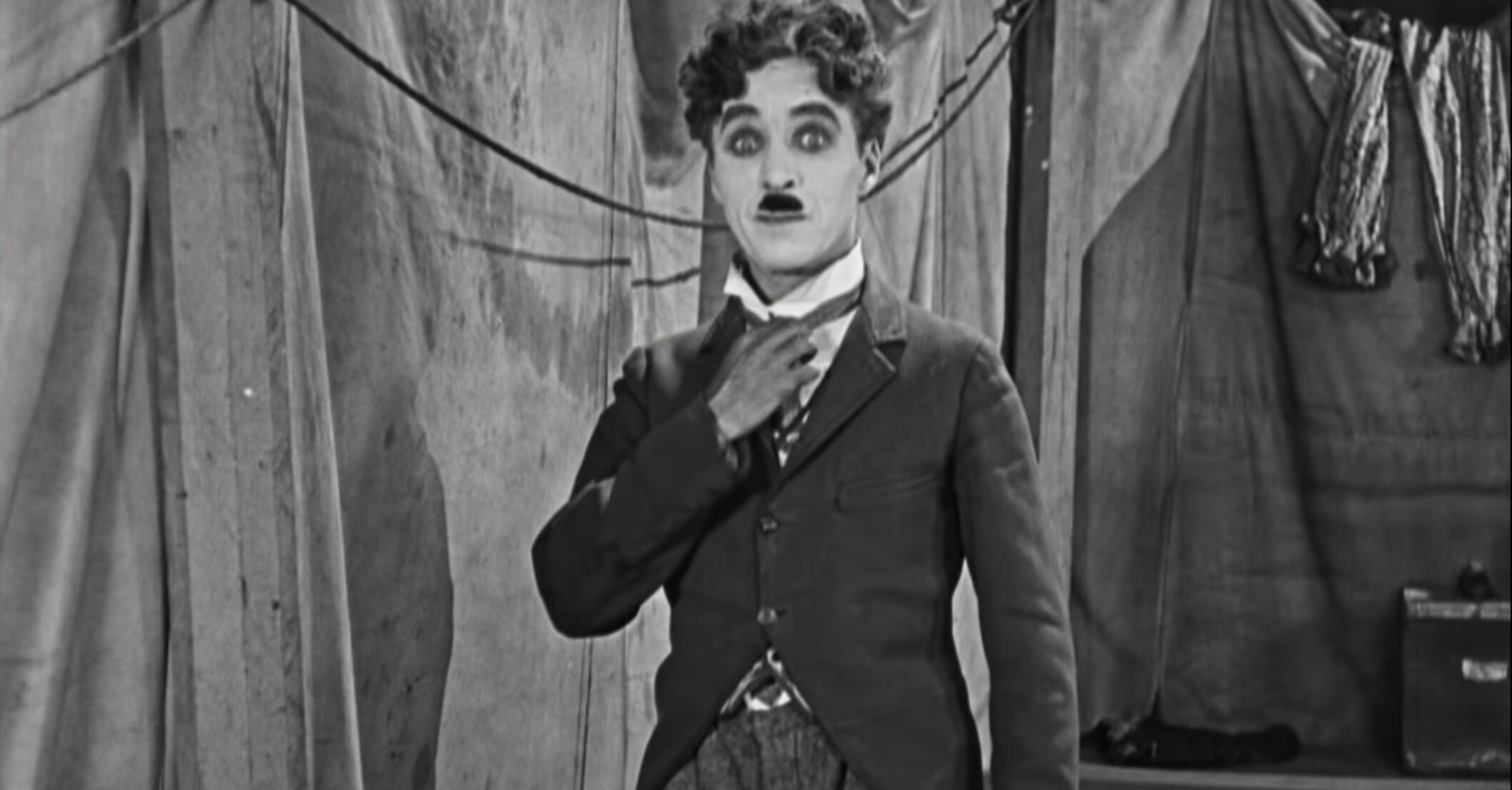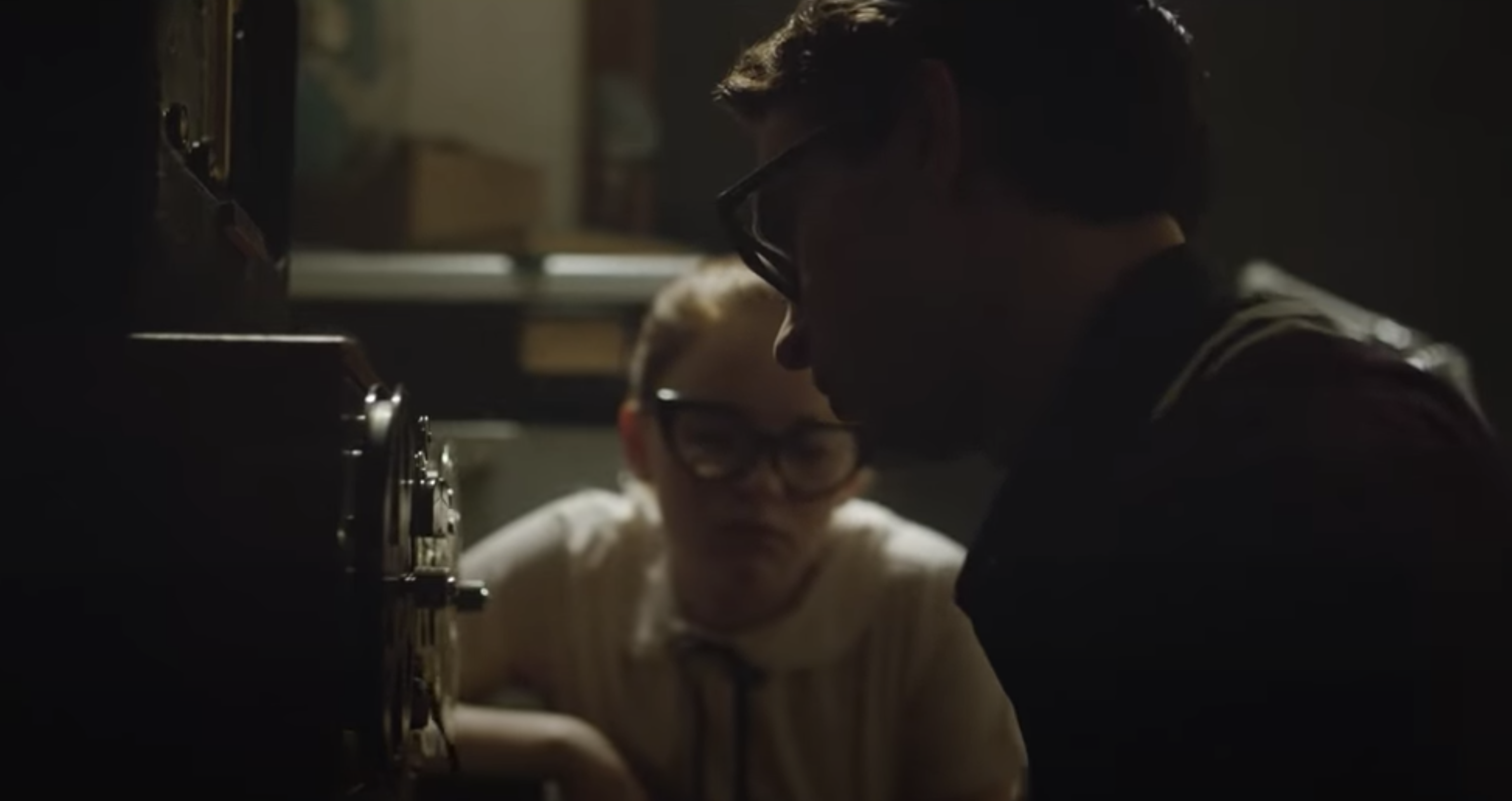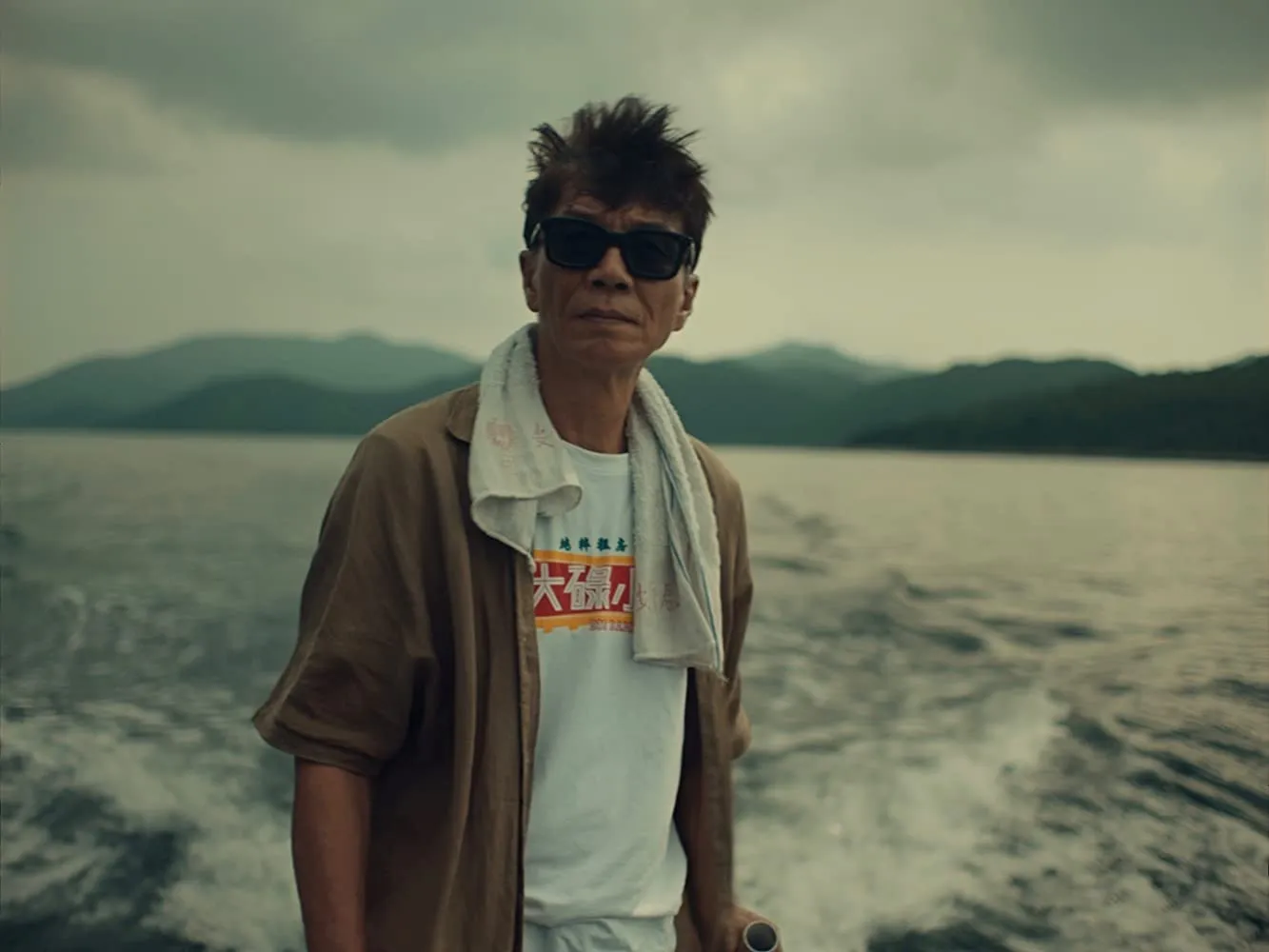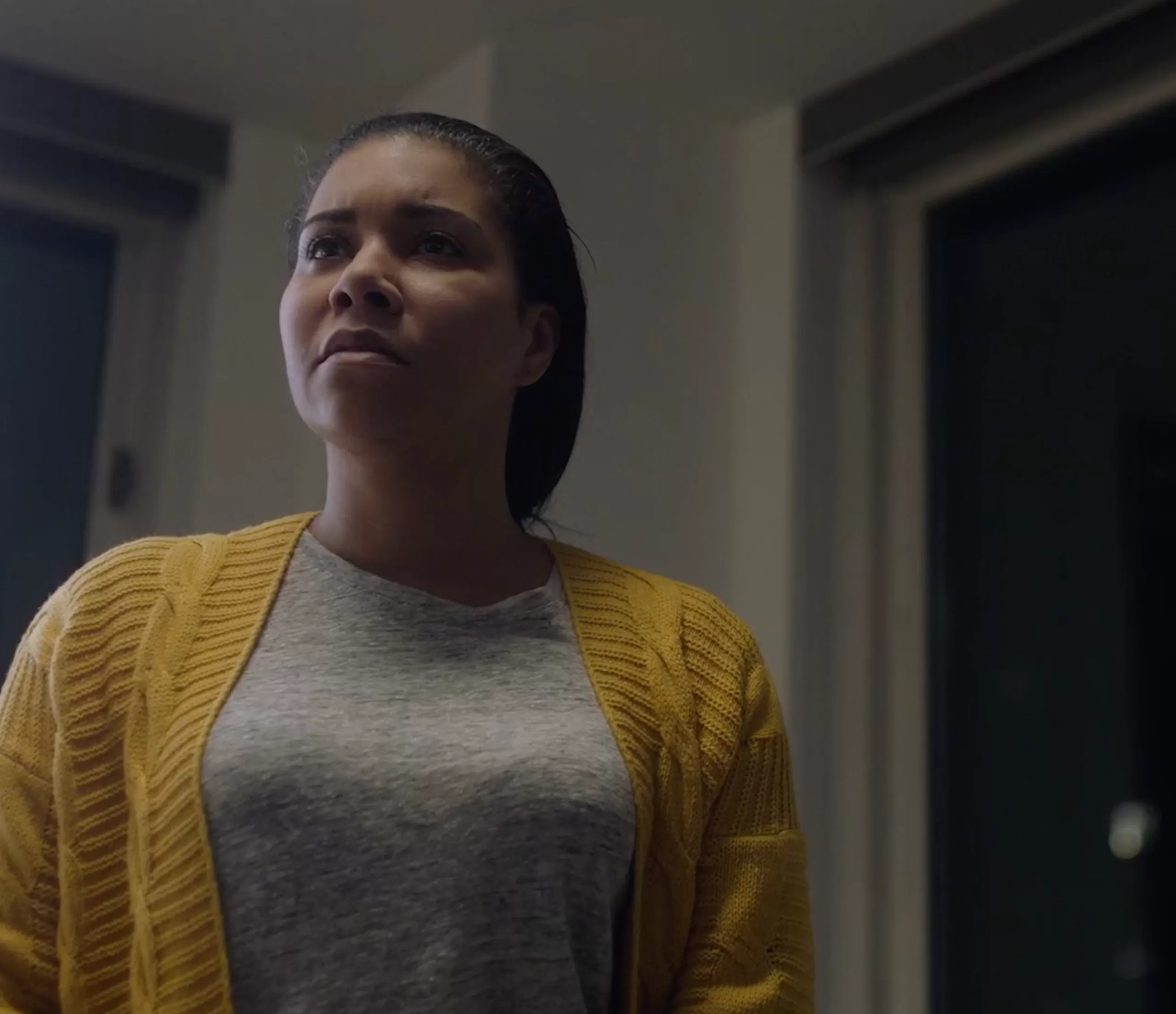INTERVIEW | Peter Middleton and James Spinney; “The Real Charlie Chaplin”
Charles Chaplin was born in a tough area of London and came to America not only to reinvent himself but partially to invent the language of the then-new art of cinema itself. Through pluck, luck and sheer determination, Chaplin became a leading man and director—often playing the familiar “Little Tramp” character for decades, first in silent films and then, most famously, with a rousing closing speech in “The Great Dictator.”
The new Showtime documentary “The Real Charlie Chaplin” attempts to peer behind the many masks, both figurative and literal, that Chaplin put up to maintain distance between himself and his many long-suffering wives and children. Directors Peter Middleton and James Spinney (featured image; Middleton is on the left) answered our questions about the documentary.
Our chat has been edited for clarity.
Why do you feel right now as the right time for a documentary about Charlie Chaplin? Did you start out from a central premise that there was “more” to his story that hadn’t yet been documented? Also, what do you feel might have been “missing” from earlier docs such as “Unknown Chaplin”?
Even today, a hundred years after he first stepped onto the screen, the name Charlie Chaplin brings an image into people’s minds. Whether or not you’ve seen any of his films, the outline of the hat, the cane and the mustache still linger in popular culture. But during Chaplin’s lifetime, he was a giant.
Because he caught the first wave of films being distributed across the world, he became famous in a way that hadn’t been possible before. Hundreds of millions of people regularly watched Chaplin’s films, his translated name reverberating across the world: Charlot, Charlee, Carlitos or Sidakwa.
Today, there’s a huge gulf between his iconic status and people’s familiarity with his life and work. When Kevin Brownlow and David Gill’s landmark documentary “Unknown Chaplin” was released, there’d been a resurgence of interest in his work following Chaplin’s lifetime achievement Academy Award and the reissue of his films. But “Unknown Chaplin” came out forty years ago. The Richard Attenborough biopic with Robert Downey Jr. will be thirty next year. We wanted to make a film which could be an introduction to people who’ve never encountered him and contains new treasures for people who know him well.
And what about the man himself versus the legend?
We were drawn in by the puzzle of someone who was universally known but seemingly unknowable. He was able to form a relationship with audiences across the world, looking out at them from the screen, but offscreen he seemed elusive. People described him as a kind of chameleon, who was “always acting, always on show, he didn’t want people to know the real Charlie.” Even his daughter Jane said that she “grew up with the icon” but “had no idea who the man was.”
The archival interviews and such that you were able to source are amazing. How did you find it all?
We felt so lucky to be let loose in the Chaplin vaults. The family gave us total access to their archives, which contains tens of thousands of photographs, news clippings and behind-the-scenes materials. We dove into the archives of the British Film Institute, which house his outtakes. We were welcomed into the fold by Chaplinologists such as David Robinson and Kevin Brownlow, whose work laid the foundations for all the Chaplin scholarship that followed.
We also spent a long period of time searching for materials that had been lost or overlooked, which could shed new light on his character.
How did you go about presenting the “real” Chaplin, as your title suggests?
We wanted the story to be told, in part, in Chaplin’s own words. But Chaplin wasn’t keen on interviews and very few were recorded on tape. The big exception was a 1966 interview with Chaplin by LIFE Magazine reporter Richard Meryman. He spent several days with Chaplin and captured the encounter on a reel-to-reel recorder. The tapes have been held in the Chaplin archives for decades, but most filmmakers before us were deterred from using it because of the poor quality of the recording.
Through the recent advances in digital restoration, however, we were able to salvage Chaplin’s voice from the thick layers of noise and hear him speaking to us from the sixties. It was thrilling to hear him describe how, in a moment of panic in 1914, he assembled what became the most famous costume in Hollywood history.
You really feel how much Chaplin’s voice has changed in the interview with his childhood friend, Effie Wisdom. In a thick cockney accent, she says “he used to talk like me” common!” Effie was ninety-two years old on the tape, talking to Kevin Brownlow in the eighties, describing South London in the 1890s. It makes Chaplin’s story even more extraordinary when you hear Effie talking about how sorry she felt for him when he was a young boy wearing ragged clothes, who was “always hungry.”
When Effie and Charlie meet again on his return to London in 1921, he’s welcomed by crowds of thousands, and she says to him “you’ve turned posh.”
Our biggest discovery was a recording of the Monsieur Verdoux press conference from 1947, which is legendary in the Chaplin story. After his work had become increasingly political in “Modern Times” and “The Great Dictator,” he released his first film without his beloved Tramp character. At the press conference, Chaplin faced a barrage of hostile questioning about his supposed communist leanings and his lack of patriotism. It concludes with a journalist saying he has “stopped being a good comedian since he’s been bringing [political] messages.” Only a short snippet of the recording had been archived, but we managed to track down the entire original recording, which forms the climax of the film.
Was it always your intention to use the audio clips rather than “talking heads” to tell the story?
The idea grew organically as we started exploring the material. Researching a biography is such an imaginative process. Finding fragments in photographs, recordings, it’s hard not to place yourself in those spaces.
So when we listened to Chaplin speaking on the tape, looking through the hundreds of photos that were taken as the interview took place, we felt transported into the living room of Chaplin’s home: the Manoir de Ban in Vevey, Switzerland. It’s now part of the Chaplin’s World museum, which led us to the idea of restaging the interview in the rooms where it took place.
So in the film, actors lip-sync to the original interview recording, intercut with the hundreds of photographs that were taken as the interview happened. It was eerie to hear Chaplin’s words reverberating around the room as we filmed, more than fifty years after he spoke them.
As a second part of that, why the reenactments instead of having the audio clips “speak for themselves,” as it were?
Taking in Chaplin’s entire life, some eighty-eight years, means using so many different types of media. His life story can be traced not just through cinema but newspapers, newsreels and photographs. So within this swirl of material, it felt important to establish present tense spaces that could thread through the film, providing moments of pause and respite, as well as acting as jumping-off points.
What can film scholars, and the general public, learn from Chaplin now, so many years after his passing?
Firstly, in one sense Chaplin embodies an aspect of silent films that is lost in the films of today. They transcended language. People from all backgrounds, all walks of life would watch him in movie houses across the world. The Tramp was almost emblematic of this universal quality of silent film, which at the time was called “Visual Esperanto.” The Tramp has no name, no nationality, he never settles in any one place. He plays with gender and sexuality. He upends authority and class. The subversive aspects of his comedy feel modern even today.
Secondly, Chaplin was one of the first true auteurs. As well as starring, he’d write, direct, produce, edit and score the music for his films. He even tried his hand at hair and makeup. He directed his actors by showing them precisely what he wanted to do, so that every person on set became a mini-Chaplin.
What we found extraordinary is that with the total control he exerts over every aspect of the production, he was always journeying inwards. He continually revisited the South London streets of his childhood, which he rebuilt in his Hollywood studio. The attic room in “The Kid” is a facsimile of the attic room where he lived as a boy—where he restages his own separation from his mother, when she was taken away to the asylum. Jackie Coogan remembered Chaplin crying as he directed the scene.
Even as he makes the first comedy epic in “The Gold Rush,” he returns to the theme of hunger, which played such a part in his childhood. He’s always using the Tramp to revisit the traumas of his youth. He describes in his autobiography the humiliation he felt as a child wearing poor clothes. His creation is a character whose clothes are constantly undermining him. Chaplin said about the Tramp: “He wants to be dignified but his shoes won’t let him.”
This interconnection between Chaplin and the Tramp is something Chapin himself described as a kind of fairy tale. The Tramp transforms Chaplin’s life, bringing him wealth and fame. But in Chaplin’s films, the Tramp is forever being sent back to the beginning. Even if he ends one film rich, at the start of the next film the world resets and he’s poor once again. This feels interesting when you learn that even as Chaplin became the highest-paid actor in the world, he always thought he would lose it. He never seemed to feel secure. He said “all the adulation is not for me, it’s for the Little Man.”
Tell me more about your narrator Pearl Mackie. Why specifically did you pitch her the voiceover job?
We wanted to avoid a conventional “voice of God” style narration, which would feel so at odds with the universe of the Tramp. Pearl grew up in Brixton, the same neighborhood as Chaplin. She brought such warmth to the narration, as well as channeling the playfulness and fluidity of the Tramp character. We hope she becomes a kind of companion, as though she’s sitting alongside you as you watch.
How did your script evolve, and did you make changes to it as your editing the picture took place?
The writing and editing happened side by side, often in the same room. At times, we’d begin with the script; at other times the script would be constructed around edited sequences.
We wanted the writing and the edit to reflect our process researching the film, which was that the more we looked into Chaplin’s life and work, the more versions of him we found. We felt that any one approach couldn’t capture them all. We were lucky to be able to make the film over several years, extended further by the pandemic. Along the way, we experimented with so many structures and ideas. In the end, the film took a similar form to the Tramp’s costume, which is a kind of collage of mismatched elements.
Taking in the extraordinary arc of Chaplin’s life in a two-hour runtime, too, requires huge gaps and omissions. The compromises in terms of things we didn’t have time to include could be heartbreaking. “The Circus,” for example, which would be the pinnacle in most other directors’ filmographies, goes without mention. But we learned that Chaplin’s sequences had to play out largely uncut to develop and climax, so (aside from the short films, which we explore through montages) we went for longer extracts, which meant fewer films. You wouldn’t face these kinds of dilemmas with most filmmakers, but Chaplin’s body of work contains a sustained period of such extraordinary work.
What do you hope people will think about as the film ends and they go back about their day?
In an age where our lives are so mediated through technology, it’s always striking to watch Chaplin looking out at us from across the screen, a century after the images were captured.
The final image of our film is the Tramp wandering off into the distance as the iris dissolves around him. As one film ends, you know he’ll be back in the next one, walking back down the road towards us, looking out at us once more.
“The Real Charlie Chaplin” is available for streaming on Showtime.
news via inbox
Nulla turp dis cursus. Integer liberos euismod pretium faucibua
